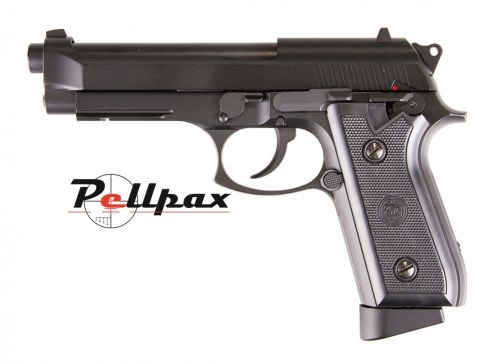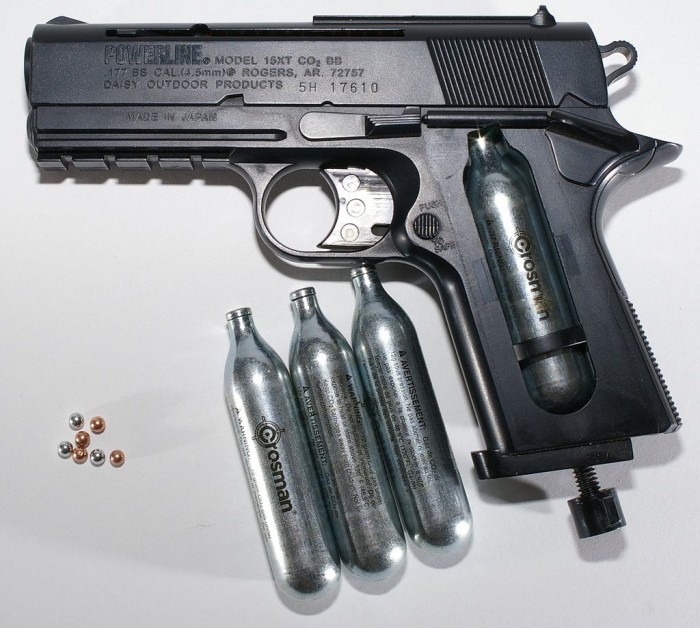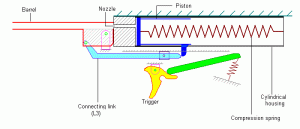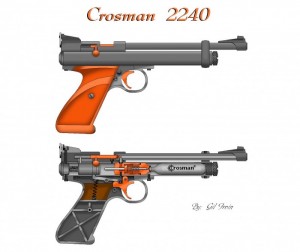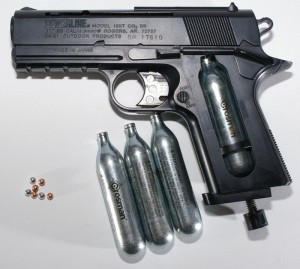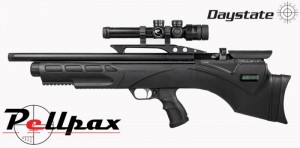What is a BB Gun?
‘BB gun’ is a very broad term that can cover a lot of different items that we sell here at Pellpax, but as a rule of thumb, BB guns are mainly pistols that can fire a round, solid ball bearing. The two main sizes that BBs come in are 4.5mm and 6mm. The 4.5mm BBs are made from steel, whereas the 6mm are made from plastic and ceramic. The guns that fire these BBs are also referred to with different terms, with the 4.5mm steel BB guns classed as airguns, and the 6mm ones as airsoft guns.
4.5mm BB Firing Airgun Pistols
Here at Pellpax, the majority of our CO2-powered air pistols fire the 4.5mm steel BBs, and use the small 12g CO2 capsule as their power source. These pistols come in different shapes and sizes, with most of them being replicas of famous and iconic pistols that you will recognise. Some examples are the Umarex Beretta M9 A3 and the Remington P-1911 RAC, to name but a couple. The 4.5mm BB airguns don’t require any licence to purchase and own, although you must be over the age of 18 and have ID to prove age, name, and address when we deliver. ID such as a driving licence is perfect.
A lot of the pistols that fire the 4.5mm steel BBs also feature a blowback action, which means the slide moves back on each shot to reload the next BB into the barrel, just as a real gun would do. This feature is huge fun and adds a sense of realism to the pistol, but does use more CO2 gas in the process (so you get fewer shots) and causes a lot more movement, which affects the accuracy. If you’re just looking for a BB gun for a bit of plinking and target shooting, and love the blowback and sense of realism, then I would suggest looking at the Remington P-1911 RAC Tactical, which offers superb reliability and quality at a great price.
The other alternative to blowback is non-blowback pistols, which are available in the standard classic pistol shape, or as revolvers. The non-blowback pistols allow you to get better accuracy and groupings when shooting, as you don’t have the movement from the slide when shooting. And because the CO2 isn’t being used for a blowback system, you also get a higher shot count. If you’re after one of these types of pistols, then good considerations are the Gamo GP-20 4.5mm BB or the Heckler & Koch USP.
Revolvers are great as well, if you prefer that style, with a lot of revolvers available in iconic styles such as the Colt Python, Colt Peacemaker, ASG Schofield, and Webley MKVI. An advantage of the revolver is that the hammer system is exposed so that it’s very easy to cock the pistol prior to each shot and shoot with a lighter trigger for increased accuracy and precision on each shot. A slight downside to revolvers is that a lot of them are limited to 6 shots in the revolving cylinder, but this is being really picky.
A few good choices for a BB gun revolver are the Dan Wesson 2.5″ Silver and the Umarex Colt Peacemaker Nickel, which are both full metal pistols and offer extremely good value for the price point.
6mm BB Airsoft Pistols
6 mm BB firing guns are referred to as Airsoft guns, as they are designed to be used in the recreational sport of airsofting, which is similar to paintball, except 6mm BBs are used. Airsoft guns are much less powerful than the 4.5mm BB guns, so as not to inflict harm when partaking in the sport; they also require a UKARA licence to purchase and own.
The power levels that these guns are restricted to is 1.3 joules for a gun capable of firing multiple shots with one trigger pull, and 2.5 joules for those that fire one shot per trigger pull.
Airsoft pistols are mainly separated by their power types, which here at Pellpax are CO2 powered and green gas powered. Gas powered air pistols are becoming the more popular of the two types, mainly because the 12g CO2 cylinders can be fiddly to change when out on the airsoft field in the midst of a match, whereas gas is quicker and easier to refill. Green gas also provides a more stable pressure, so your power and accuracy between shots is more consistent.
If you prefer the CO2 BB guns, then a lot of them are available in the classic pistol shapes, such as the KWC M-92 CO2 6mm Airsoft, based on the M92 frame, and the KWC Desert Eagle CO2 6mm Airsoft, which is quite self-explanatory as to what it is based on! These are both great pistols and perfect if you don’t mind the CO2 canisters.
As for gas-powered BB guns, again they are all mainly based on classic pistol frames and are all of good quality, but a couple to take a look at are the WE Big Bird 6mm Airsoft and the Nighthawk 1911 6mm Airsoft, both of which offer superb build quality and stable reliability. The green gas and BBs are loaded into the dropout magazines, making it easy to have a few on hand to drop in when one runs out, which is very useful when out on the field. Most also have adjustable hop-up, which is the spin on the BB that many shooters find useful when outside in the elements, shooting.
We also have two-tone pistols, which are below the 1 joule limit, and which have at least 51% of their frame painted in a bright colour – normally blue, orange, or clear. These items don’t require any licence to purchase and own, although you must be over the age of 18. A lot of these are spring powered, so you pull the slide back to cock, then fire the shot. This makes them very simple and reliable to use and great for a bit of plinking in the back garden. You can view the whole range here…
I hope this article has helped explain a bit more about what BB guns are and how you would go about obtaining one in the UK!

